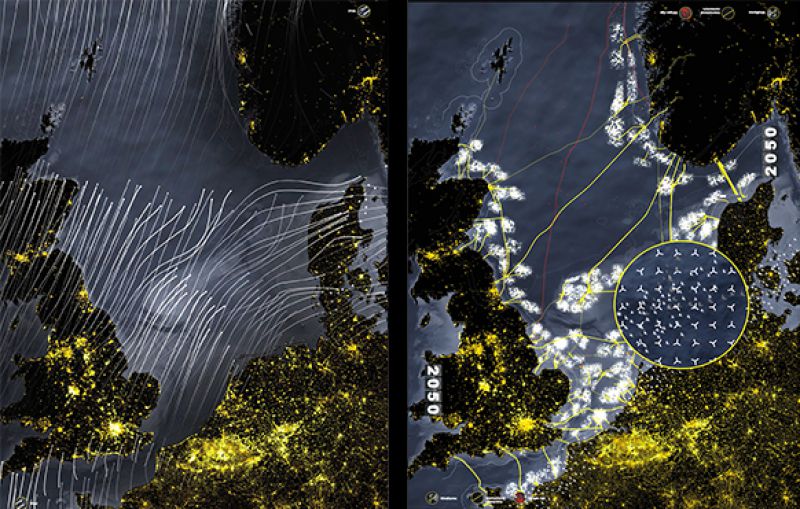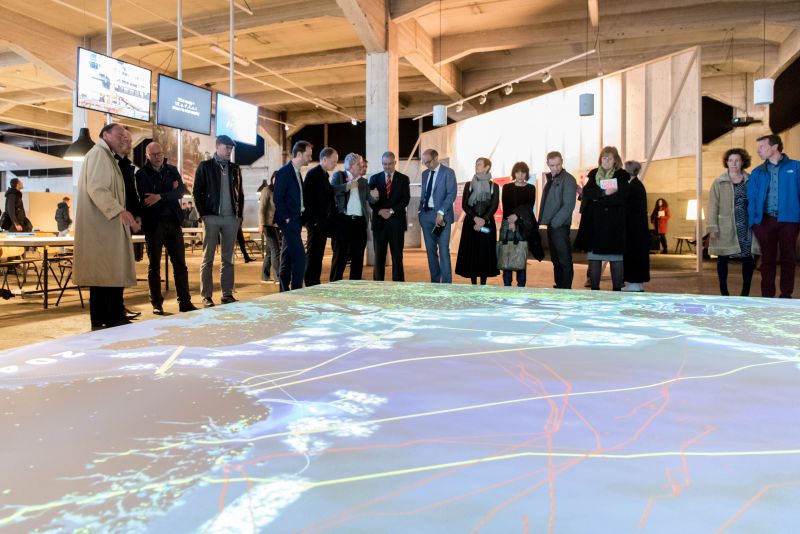
© IABR, Tungsten Pro
The European climate objective – 80 to 95 percent reduction of greenhouse gas emissions in 2050 compared with 1990 – requires significant system changes. The IABR–Atelier 2050 – An Energetic Odyssey shows how far-reaching the energy transition from fossil fuels such as oil, coal, and gas to an energy supply largely fed by renewable energy sources actually is. It is a (spatial) task that is still largely underestimated. On land, we will have to pull out all the stops in terms of energy saving, central and decentral initiatives with solar panels, wind, bio mass, geothermal heat, residual heat, and so on. Even making a maximum effort, this will prove inadequate. 2050 – An Energetic Odyssey represents a system leap that makes it possible to bridge this gap by the very large-scale production of wind energy on the relatively shallow North Sea for the countries that surround it.
Transition
The IABR–Atelier 2050 demonstrates what such an ambitious approach involves, what infrastructure it requires, what it means to link up with the nature of the North Sea, what role the entrepreneurial state plays, which innovations this requires, and especially which new economic dynamic this will generate, for instance in the offshore sector.
Research by design will facilitate this transition of imaginaries. The aim of the installation is to create a reference point for a broad dialogue between public and private parties and a new, appealing step towards the realization of large scale production, transportation, and storage of renewable energy on and around the North Sea. Development perspectives are outlined on the basis of a robust future scenario.
After IABR–2016–THE NEXT ECONOMY the installation has been reformatted. Click here to see the video
Towards a clean economy
The title of the project, 2050 – An Energetic Odyssey, is meant to provoke. Many people underestimate the scale of the challenge and think that the transition can take place with the support of small-scale projects alone (small is beautiful). However, the goal agreed upon worldwide – to limit global warming to 1.5 to 2 degrees – also requires more large-scale and drastic changes of the system. The good news is that, in principle, the production of North Sea energy can meet the demand. 2050 – An Energetic Odyssey shows that the Next Economy can be a clean economy.
IABR with the Ministry of Economic Affairs, Van Oord, Shell, TenneT, Zeeland Seaports, European Climate Foundation, Natuur & Milieu, RWE, Port of Rotterdam Authority and Port of Amsterdam.
Concept: Maarten Hajer and Dirk Sijmons
Research by design and animation by H+N+S Landscape Architects, Ecofys and Tungsten Pro




